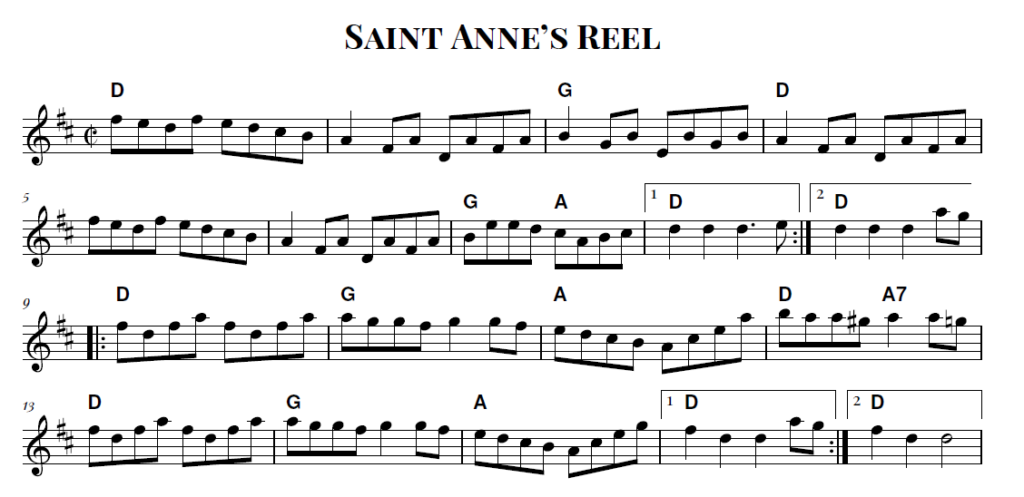The well-known tune, St. Anne’s Reel, is believed to be French Canadian, as the first recording came out in 1927 as Quadrille du loup garou – 4ème partie by Montreal fiddler, Willie Ringuette. The tune was recorded again in the next few years under the titles, Reel des esquimaults and Reel lune de miel by Joseph Allard and Isidore Soucy respectively.1 `St. Anne’ most likely refers to the Sainte-Anne-de-Bellevue municipality on the western end of Montreal.2
St. Anne’s Reel is very popular among American Old Time, Irish, and Canadian players probably because of the tune’s ability to be elaborated to fit the needs of the situation (e.g., instrumental improvisation or dance steps) while remaining identifiably St. Anne’s Reel. I believe the reason is twofold: melodic rhythm and harmonic progression. St. Anne’s Reel’s melodic rhythmic motif of quarter- 6 eighth notes (measure 2 in this version) can (and will) be moved around to other measures as the player decides. The IV-V-I harmonic progression (the G-A-D chords in measure 7-8 and 15-17) can easily elevate the simplest theme or reign in the most elaborate of variations. Saint Anne’s Reel is a tune that all levels of playing can make their own.
—Kitty Steetle
Last modified: February 2, 2023
By downloading this music, you agree to the Terms & Conditions.
- https://tunearch.org/wiki/Annotation:St._Anne%27s_Reel[
]
- Duval, Jean. La Musique de Joseph Allard 1873-1947, 2018, p. 72.[
]
